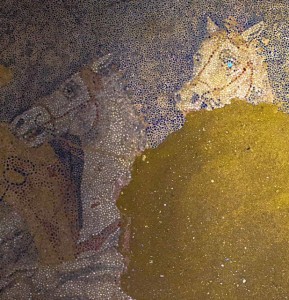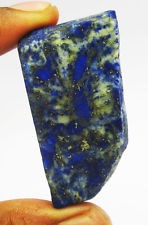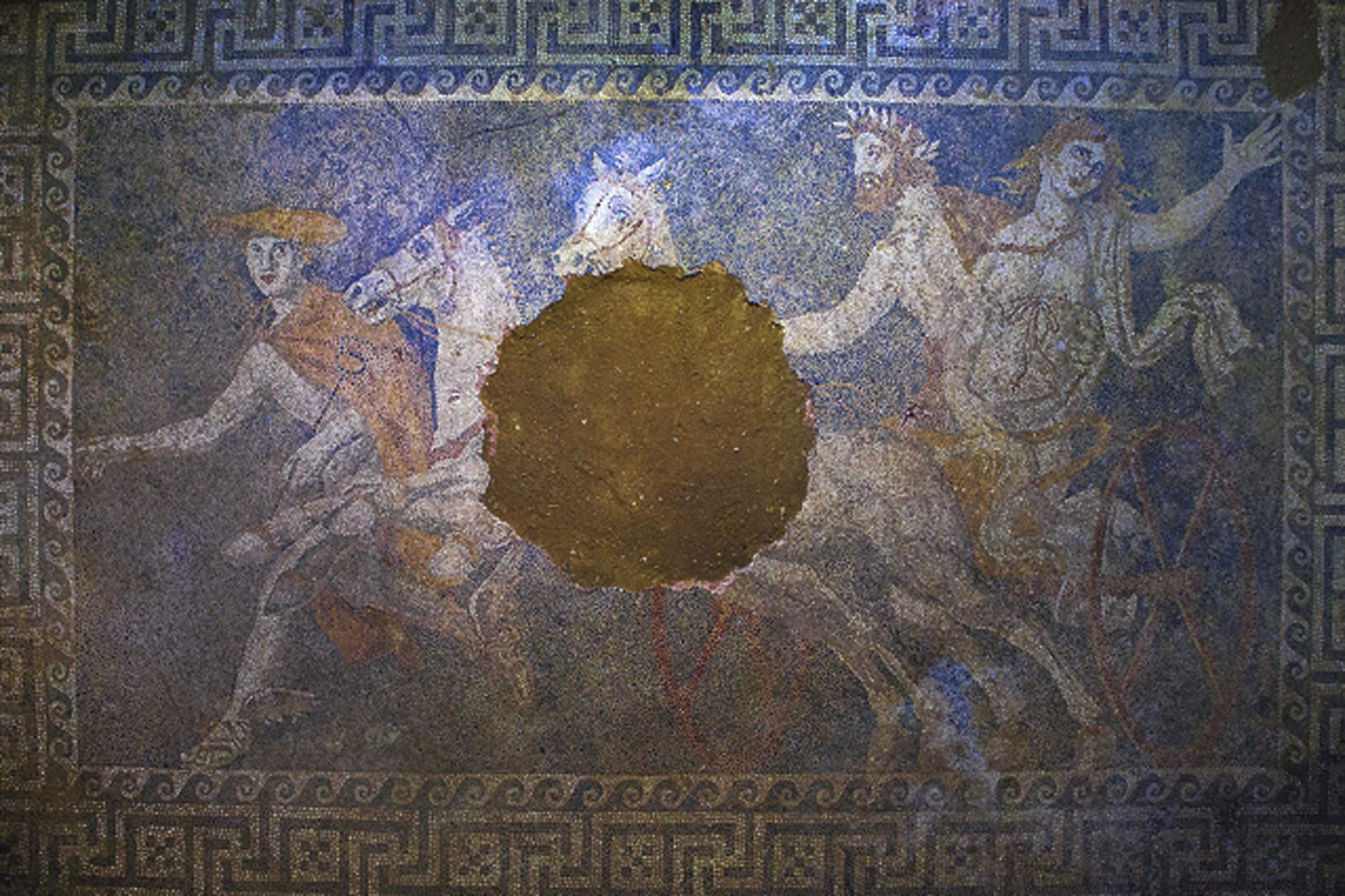The mosaic uncovered in the third chamber of the ancient tomb at Amphipolis was under scrutiny as soon as it was uncovered in the hope that clues would be found about the identity of the occupant of the tomb. Attention was particularly cast on the horse’s azure blue eye with a portion of amphipolis enthusiasts claiming that it was so vibrant and striking that it may have been meant to depict Alexander the Great’s horse, Bucephalus.
The azure-blue color may have been created from azurite, a popular mineral due to its beautiful color. Azurite was abundant in the mines of Alistrati. Powedered azurite, called “cyanus” by Pliny the Elder, was popular with Hellenistic era artist.
Dr. Petros Tzeferis, head of the Ministry of Environment, Energy and Climate Change department for Minerals and Raw Materials Policy, says that the mosaic pieces used to create the horse’s eye could also be lazurite – a deep greenish blue mineral with sulfate, sulfur and chloride. Lazurite crystallizes although well-formed crystals are rare. It forms the bulk of the gemstone lapis lazuli.
Lazurite has been mined for over 6,000 years in the lapis lazuli district of Badakhshan, Afghanistan, and had been used as a pigment in painting and cloth dyeing. Dr. Tzeferis says that lapis lazuli originated in Afghanistan, went to Egypt and then was brought to Greece.
Ask me anything
Explore related questions









